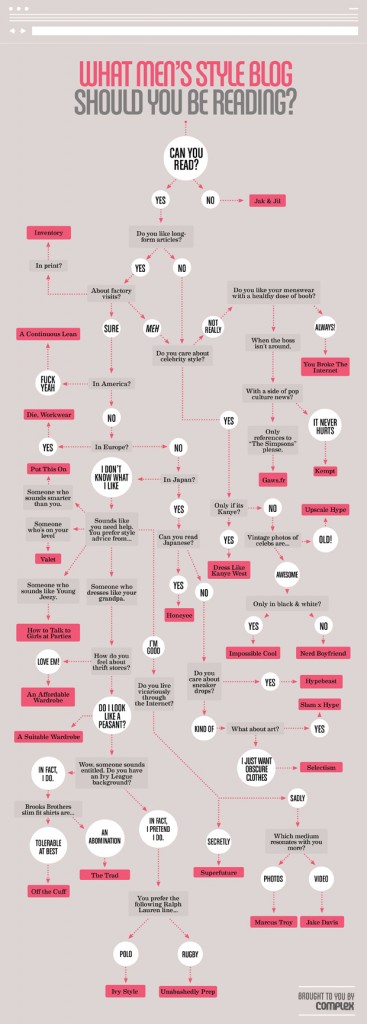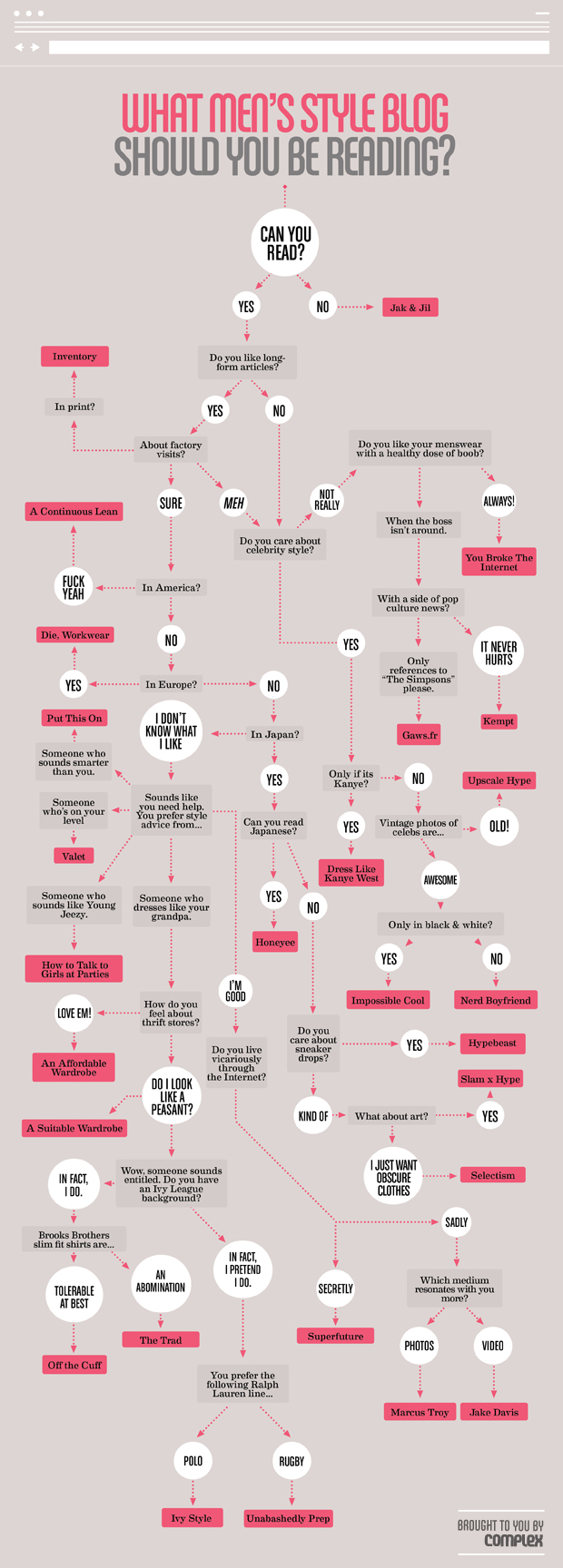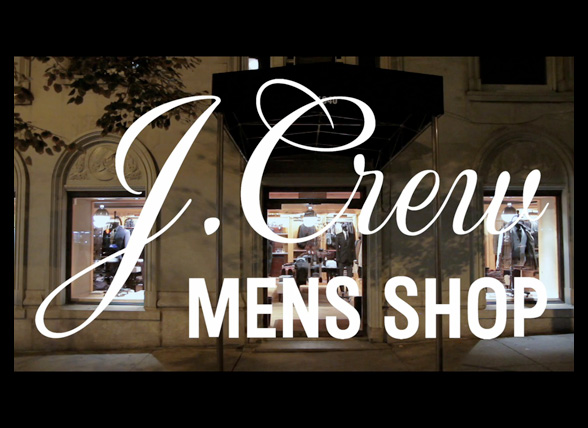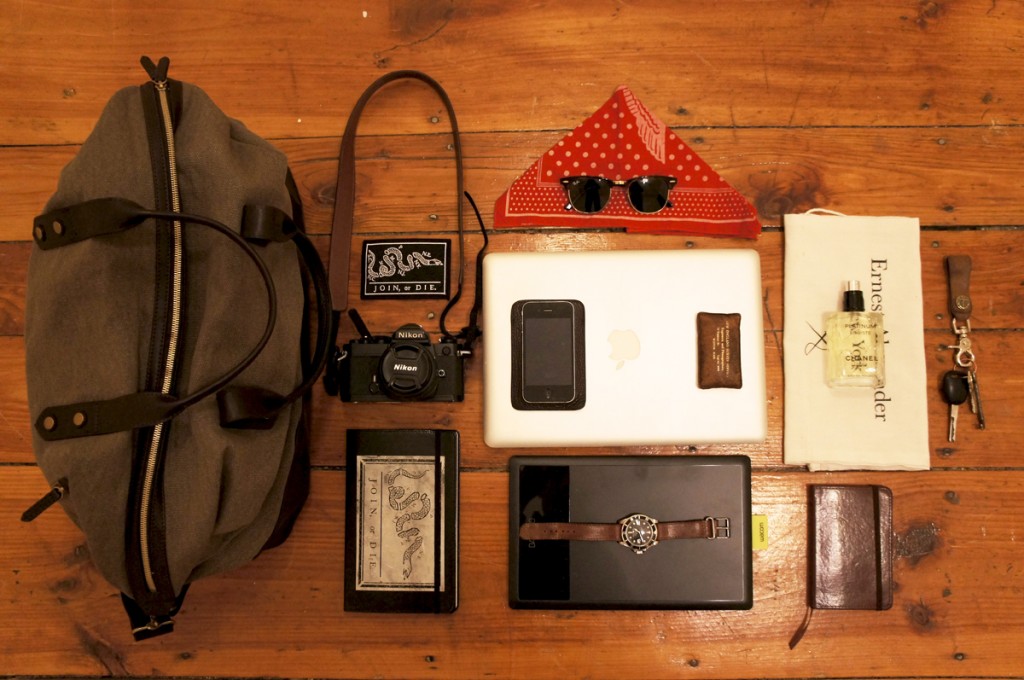In part one of this essay, we discussed some of the changes that have begun to redefine the concept of brand loyalty. While consumers may still be loyal to a given brand, the way in which they interact with that brand is much more fragmented, delineated, and nuanced
It’s still an ongoing shift of course, but the edges of the new pathway are becoming clearer. In plain terms, what is changing, and by extension changing how companies market their wares, is that many customers no longer look to a single brand or “lifestyle” to define who they are.
For example, not long ago, a person looking to express their patrician aspirations might say, “I choose to identify with Ralph Lauren.” Today, that same customer is more likely to state, “I like Ralph Lauren polo shirts, but I like Lumina oxfords, and Freeman Sporting Club suits. I prefer Raleigh Denim jeans and American Giant tees.” The ability of a single brand to define a customer’s life is fading. Smaller, specialized brands that produce high-quality products are allowing customers to themselves create their own “lifestyle branding.”
 Driving this reversal in influence is of course, social media. Never before have people been able to access so much information about trends, products, reviews, and prices. In mere minutes, I can find out who makes the best messenger bag or thick-soled cordovan wingtips, read a detailed review on a blog, and even get on the phone with the guys who actually makes those shoes.
Driving this reversal in influence is of course, social media. Never before have people been able to access so much information about trends, products, reviews, and prices. In mere minutes, I can find out who makes the best messenger bag or thick-soled cordovan wingtips, read a detailed review on a blog, and even get on the phone with the guys who actually makes those shoes.
I can post a picture of my new shoes on Pinterest or Fancy, tweet the makers’ link to my Twitter followers, review my new shoes on Facebook, and – if I have time – make a quick “box-opening” video for You Tube (unfortunately, that’s not me with the new Rolex!).
That is serious consumer power.
Combined with an economy that continues to stagnate on many fronts and you have a retail landscape that requires a company to explain in clear terms why, exactly, it should matter to a customer. With purchases and products being scrutinized by customers like never before, labels that grew at a global scale and licensed out all their branded accessories face buyers tired of sub-par quality for the sake of a name. It’s fair to say that smaller brands with tight controls on design, production and quality – and that actually make things people want to buy – will gain in the evolving loyalty game.
Almost by default, luxury – or at least quality – will again mean exclusivity.
All bout the guys
At the same time, menswear in particular is faced with an exciting trend. All those men who for generations did not care much about this season’s Pantone color or whether summer scarves are “in” are not only becoming active in their fashion choices, they are actually becoming market movers.
Across the spectrum of retail, men are taking a more active role in outfitting their own wardrobes, carefully selecting accessories, and fussing over things like quality and provenance. Retailers have taken notice and many have broadened and deepened their menswear selections. The smart ones fixate on quality and heritage, to use an overwrought term. More so than women, men want products with a story or background.
The reasons are myriad, but growing numbers of guys have shaken off the stale myth that they should not care about style, fashion, luxury and looking good. When OTC launched way back in 2006, there were at best a handful of blogs dedicated to menswear. Today, men are looking for help and advice on all matters sartorial. They actively seek out information and feedback about products, brands, and trends that interest them.
More to the point, they are also looking for validation and community about the brands that they like. The brand itself is not enough; they want to be part of a sartorial tribe. To be sure, there is also a strong desire to stand alone and be unique. We all want the one thing that sets us apart from the herd – but not too far. We want to stand out just enough to let the other guys know we are our own person, but not be a jerk about it.
Calling the branding shots
As the concept of what exactly a brand means and who decides if it’s worth something becomes more decentralized, defining who you are is becoming more personal and individual. And with men educating themselves about style, fashion, etiquette and luxury, brands that heretofore could consider themselves one-stop-shops will have to change their approach.
J. Crew is a good example of a company the early on identified the trend of men taking their image, and shopping, into their own hands. In addition to its SoHo Liquor Store men’s-only shop, the company intently focuses on its male customers through dedicated catalogs, additional menswear focused retail outlets, and it’s much-copied, “in good company” collaborations.
This approach allows the overall brand to remain whole but provide customers with a sense of individuality and more importantly, the feeling that these specialized products and shopping experiences meet a higher standard.
It all boils down to a growing customer base that simply does not need to be told who they are, what they really want, or what kind of life they should lead. They may read lots of fashion and style magazines and check out yours truly on the Web, but they are the ones who decide what their “look” is. Brands need to meet their approval.
This may explain why many of the coolest brands are also niche ones. And for these folks success does not necessarily translate into huge market share or big profits. Those things matter of course, it is about business at the end of the day. But it is also, more often than not, about passion, as with Will Lisak of ETWAS Bags.
These “bespoke” brands specialize in a particular slice of life, perspective, product, or philosophy. They tend to be brands founded by someone in love with a certain idea or type of product, like innovative bag maker J. Panther Luggage Co. or upstart shirting company Hugh & Crye. They see things a little differently and understand that their genuine individuality and dedication to quality and service are the keys to success in this new retail landscape.
They know this because they are also consumers. And more often, today’s menswear customers already know who they are or want to be; they don’t need instructions.
Put another way: the brand needs to fit who I am, not the other way around.



Interesting and excellent read, especially considering you singled out J Crew. When this blog started in 2006, I was only a year removed from college, and just starting to find my own way. I found J Crew to provide what I was looking, and their shirts and polos fit who I am quite well. To this day, majority of my shirts are from them; the quality and customer service keep me. Recently I even had a problem with a month old shirt, and they credited my account no questions asked. The brands that provide quality and service for goods that fit my life and style will continue to get my business.
Can we get the details on the items in that Frank Clegg picture?
Walter – Thanks for adding your personal observations. J.Crew, particularly Mickey Drexler, is a market leader for a reason. The company knows its customers and understands what is brand means – particularly in menswear space.
Tony – Here is the link to AD’s description of all the items: http://anchordivision.com/edc-v2-jamison-aweau/
Excellent food for thought. Thanks.
RM needs to hold their Monterey auction in a larger venue. It’s nearly impossible for the public to attend, and even journalists have a hard time getting in, unless you have a major media organization behind you. You have to buy a bidder’s card just to get close to the premium consignments, and that costs a small fortune. At least Gooding issued me and my photographer credentials. They make some of it up on the ten-dollar hot dogs and the $100 two-volume glossy catalogues..
It’s awesome for me to have a website, which is valuable for my know-how. thanks admin